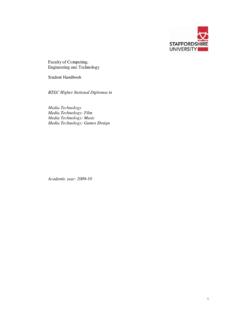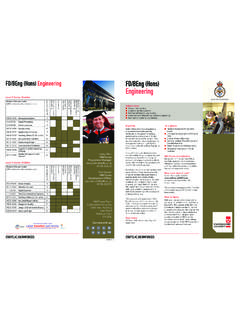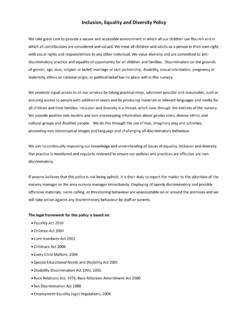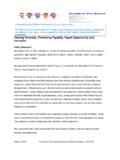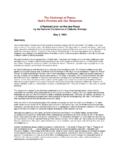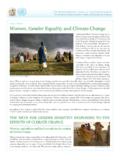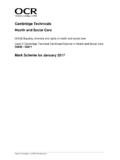Transcription of Conducting impact assessments for equal …
1 Conducting impactassessments forequal opportunitiesin higher educationA guide to good practiceOctober 2004/37 Good practiceFree HEFCE 2004 The copyright for this publication is held by theHigher Education Funding Council for England(HEFCE). The material may be copied orreproduced provided that the source isacknowledged and the material, wholly or in part,is not used for commercial gain. Use of the materialfor commercial gain requires the prior writtenpermission of formats This publication can be downloaded from theHEFCE web-site ( ) underPublications. For readers without access to theinternet, we can also supply it on '' disk or inlarge print. Please call 0117 931 7035 foralternative format 2004/37 1 Foreword2 Executive summary3 Part 1 ContextIntroduction5 What is impact assessment ?
2 6 The business imperative8 The legal imperative9 Part 2 Carrying out an impact assessmentThe different stages11 Identifying policies and functions11 Identifying the aims of a policy: the screening process14 Consideration of available data18 Consultation22 Assessing impact24 Eliminating or reducing any adverse impact found27 Publication of impact assessment and findings29 Monitoring for adverse impact in the future30 Annex AHow the specific duties fit into the general duty31 Annex B Policy screening form32 Annex CImpact assessment checklist 36 List of abbreviationsInside back coverContents2 HEFCE 2004/37 HEFCE is fully committed to promoting equal opportunities in highereducation, and to helping universities and colleges meet their duties under theRace Relations (Amendment)
3 Act key challenge for institutions in enhancing equality and diversity lies inunderstanding the needs of staff, students, stakeholders and the widercommunity and addressing those needs in their policies and practices. We are keen to support the higher education sector in meeting that our guidance on monitoring for equality and diversity (HEFCE2004/14), we have produced this guide on equality impact assessment forequality and diversity. It aims to show not only how impact assessments can becarried out in the higher education context, but also how such assessments canimprove mechanisms for policy review and for embedding equality and diversityinto all the institution s activities. Although this guidance is primarily a toolkit for equality practitioners, webelieve it will help higher education staff at all levels to understand the benefitsof Conducting impact assessments and using the results to help people fulfiltheir potential and to maximise have worked closely with the Equality Challenge Unit in preparing thisguidance, and are grateful to those institutions that provided examples of goodpractice and helped to pilot this guide, many of which are included here.
4 Wealso appreciate the contribution by critical readers of this publication, includingtrades unions and practitioner networks, whose input ensured that the guidanceremains a practical and constructive tool for institutions. Sir Howard NewbyChief ExecutiveHigher Education Funding Council for EnglandForeword Executive summaryPurpose1. This document provides practical guidance to highereducation institutions (HEIs) in terms of assessing the impact oftheir institutional policies. It offers a step-by-step guide tocarrying out impact assessments and provides a tool with whichHEI staff can not only meet the requirements of legislation butalso promote and celebrate equality and diversity in points 2. The Race Relations (Amendment) Act 2000 places arequirement on all public authorities (including HEIs) to carryout impact assessments on the grounds of race.
5 Although, bylaw, public authorities are currently required to undertakeimpact assessments only with respect to race equality, it is goodpractice to extend this to other equality areas such as gender,age, disability, religion or belief and sexual orientation. Thisguidance is therefore intended to be used as a template which,appropriately modified, can be used to conduct impactassessments in other equality This document is aimed at senior managers, heads ofdepartment, equality practitioners and all those with aresponsibility for policy formation and policy delivery in highereducation (HE). These are the people responsible for carryingout or contributing to impact assessments in HEIs. It is alsorecommended reading for anyone working in HE, as the conceptof impact assessment has to be incorporated into everydayworking impact assessments for equalopportunities in higher educationToHeads of HEFCE-funded higher education institutionsHeads of universities in Northern IrelandOf interest to those responsible forEquality and diversity management, Human resourcesmanagement, Institutional strategic planningReference2004/37 Publication dateOctober 2004 Enquiries toAmy Nortontel 0117 931 7316 e-mail 2004/37 34.
6 impact assessment is the thorough and systematic analysis of a policy orpractice to determine whether it has a differential impact on a particular can be seen as a quality control mechanism by which HEIs can evaluate theiractivities and best meet the needs of their stakeholders. This can lead to bettervalue for money, increased productivity and maximisation of resources, leadingto a more efficient and effective working and learning The challenges to an institution in implementing equality impact assessmentsare not underestimated, hence the guidance emphasises the concepts of relevanceand proportionalityas the principles that should be adopted when decidingwhether to undertake full impact assessments . This process should be regardedin the same way as any good management practice, and resources for impactassessment directed to the policies, functions and practices which have thegreatest relevance and impact on equality and diversity.
7 6. The impact assessment process follows a simple template. At an institutionallevel, all policies and practices of an institution are mapped out, andresponsibilities are delegated to ensure thorough and systematic coverage of allinstitutional functions. The policies are then screened to determine equalityrelevance and ascertain priorities. Local and national data and consultations areused to ascertain if the policy or practice has an unjustified negative impact onany particular group. If a negative, or adverse, impact is found, then steps mustbe taken to eliminate it. This process has to be compiled in a report andpublicised within the institution so that all staff and students are aware of anychanges that have been impact assessments are not one-off exercises but should be incorporated intoa three-year cycle of institutional review as recommended by the Commissionfor Racial Equality (CRE).
8 Results of assessments should be monitored andmade available for internal and external At Annex A there is a visual demonstration of the relationship between theRR(A)A s general and specific duties, which should help readers to visualise therole that impact assessment has in implementing the Act. Annex B contains atemplate for a policy screening form, which can be used for any policy within aninstitution, at its initial stages of development. There are mini-checklists at theend of each section which sum up the action points from that chapter. These arecompiled into an impact assessment checklist at Annex C, which can be used asa self assessment required9. This document is for information and 2004/37 Introduction10.
9 impact assessment is the thorough and systematic analysis of a policy orpractice to determine whether it has a differential impact on a particular is a legal requirement under race equality legislation, but can be undertakenfor all equality The need for guidance on impact assessment was identified as HEIsresponded to the challenges of the Race Relations Act 1976 as amended by theRace Relations (Amendment) Act 2000 (RR(A)A 2000). In section 71(1) of theAct there is a requirement for all public authorities in carrying out its functions,to have due regard to the need:a. To eliminate unlawful racial discrimination; andb. To promote equality of opportunity; and c. To promote good relations between persons of different racial Together these requirements form the general dutyto promote race This duty applies to all policies and practices of an HEI regardless of theirnature, who developed them, where they have come from or who implementsthem.
10 All policies that have the potential to affect the duty need to be The general duty is a positive requires public authorities to pre-empt unlawful discrimination before it occurs. This takes the law a step furtherfrom the previous Race Relations Act 1976 by requiring bodies not to simplyavoid doing something, such as avoiding unlawfully discriminating on racialgrounds, but to be proactive in promoting race equality. This means thatinstitutions must take steps to ensure that their policies and practices are fairand lawful from the impact assessment is one of the specific duties of the RR(A)A 2000. Thespecific duties are mechanisms by which the general duty is met. The otherspecific duties are monitoring, consultation, publishing and training.


